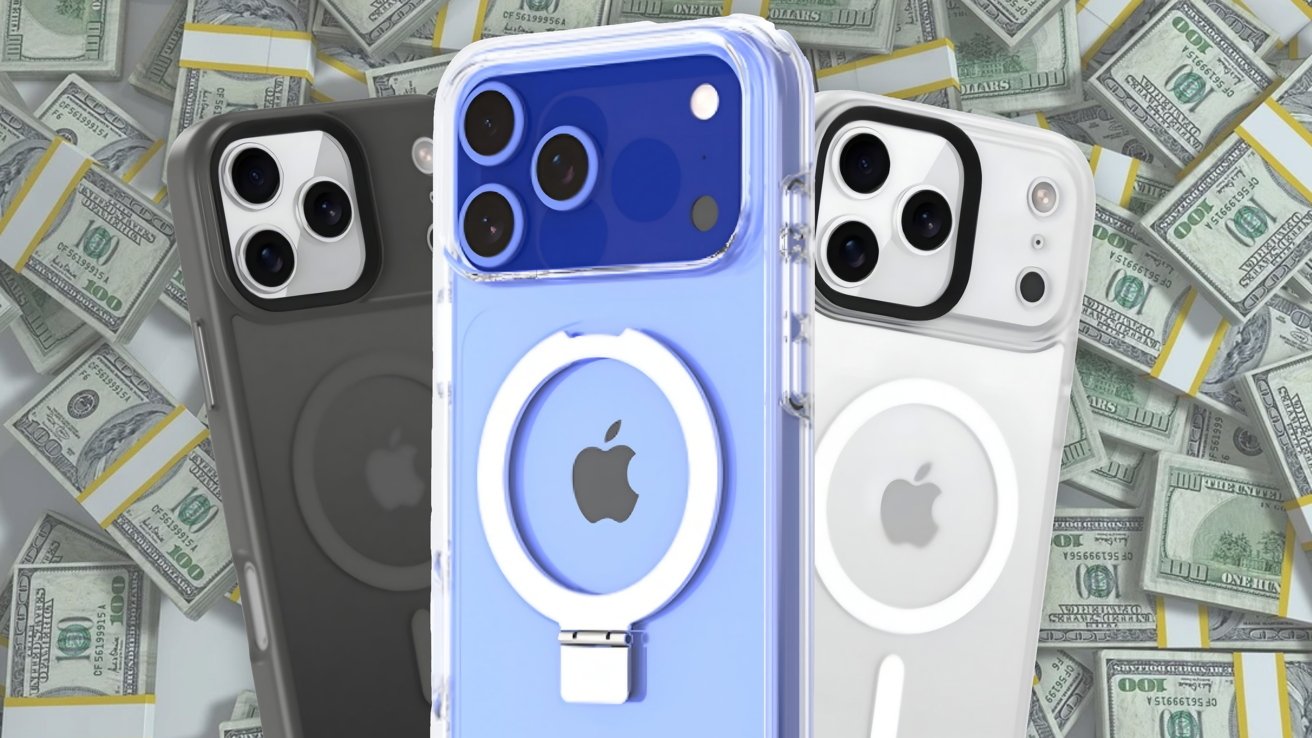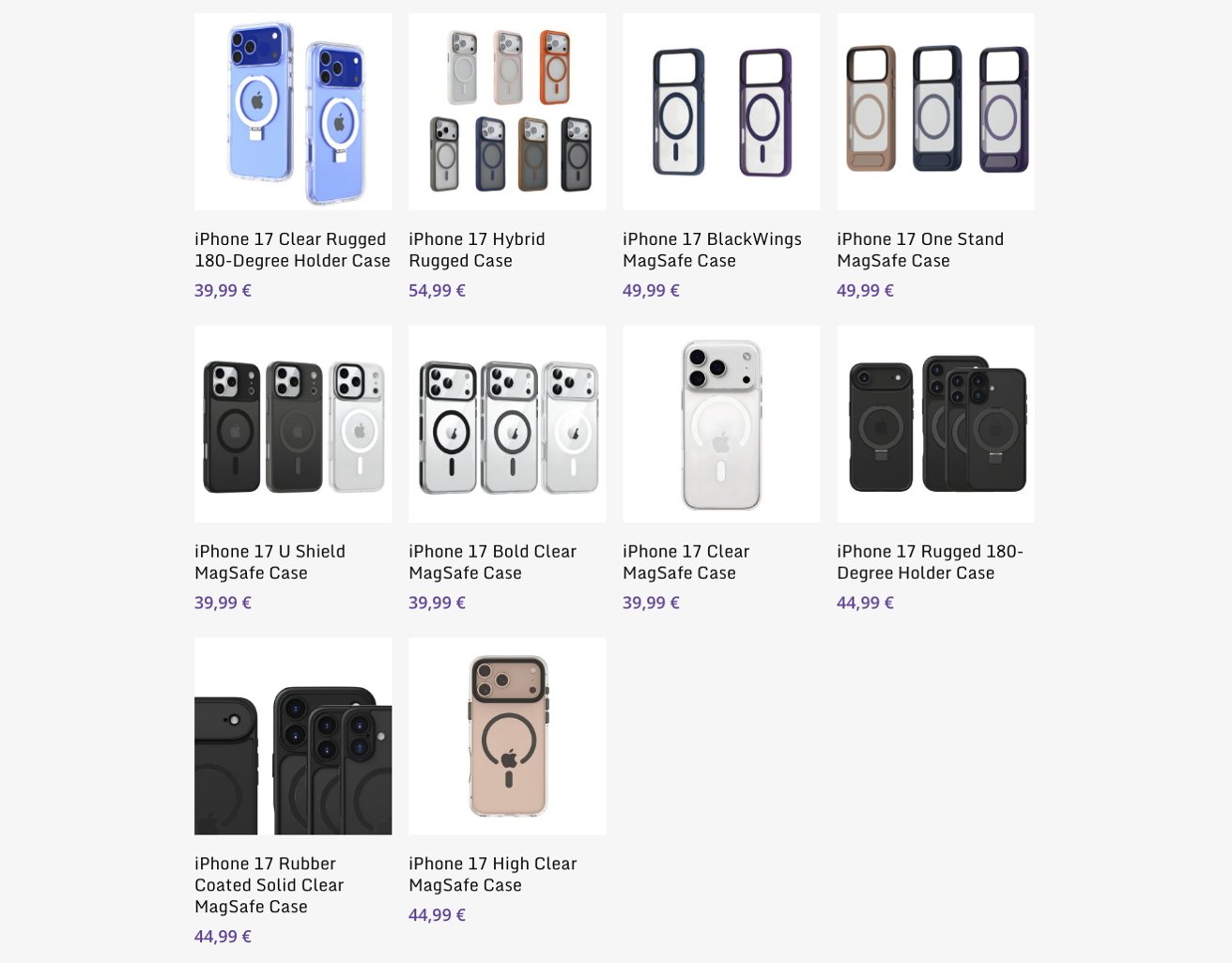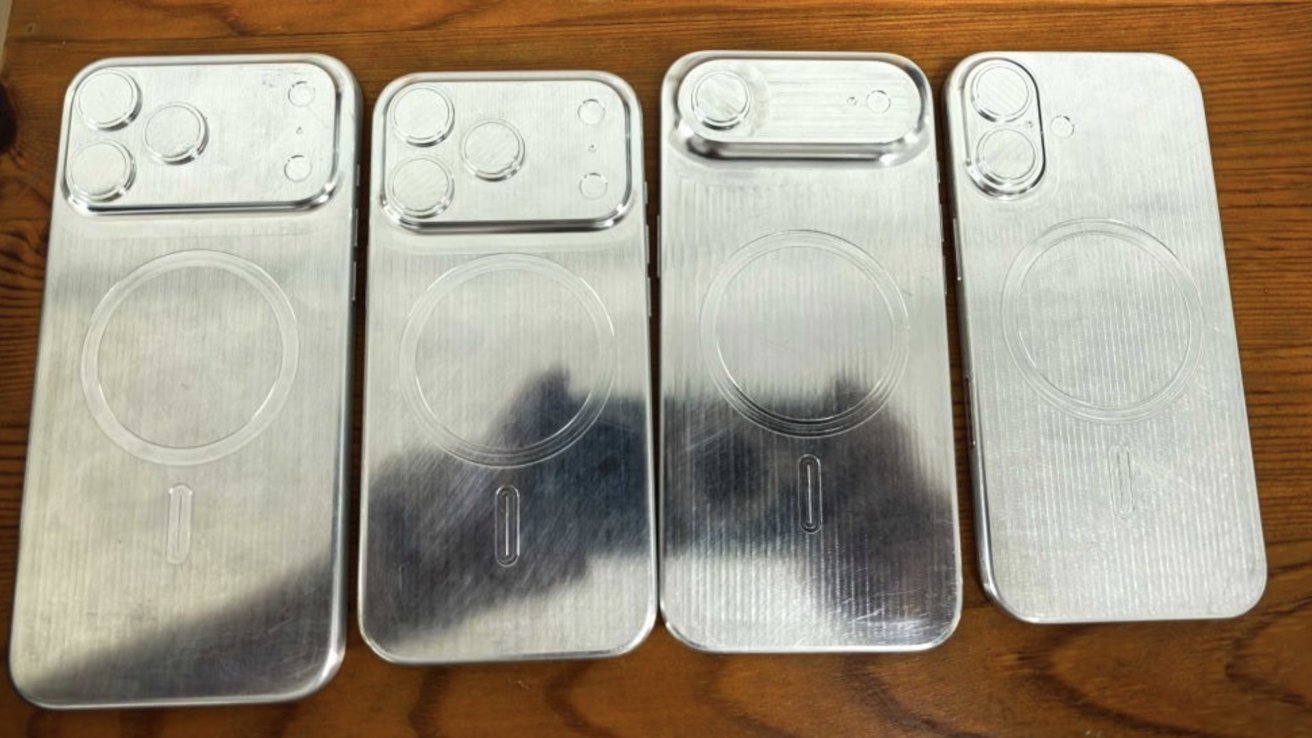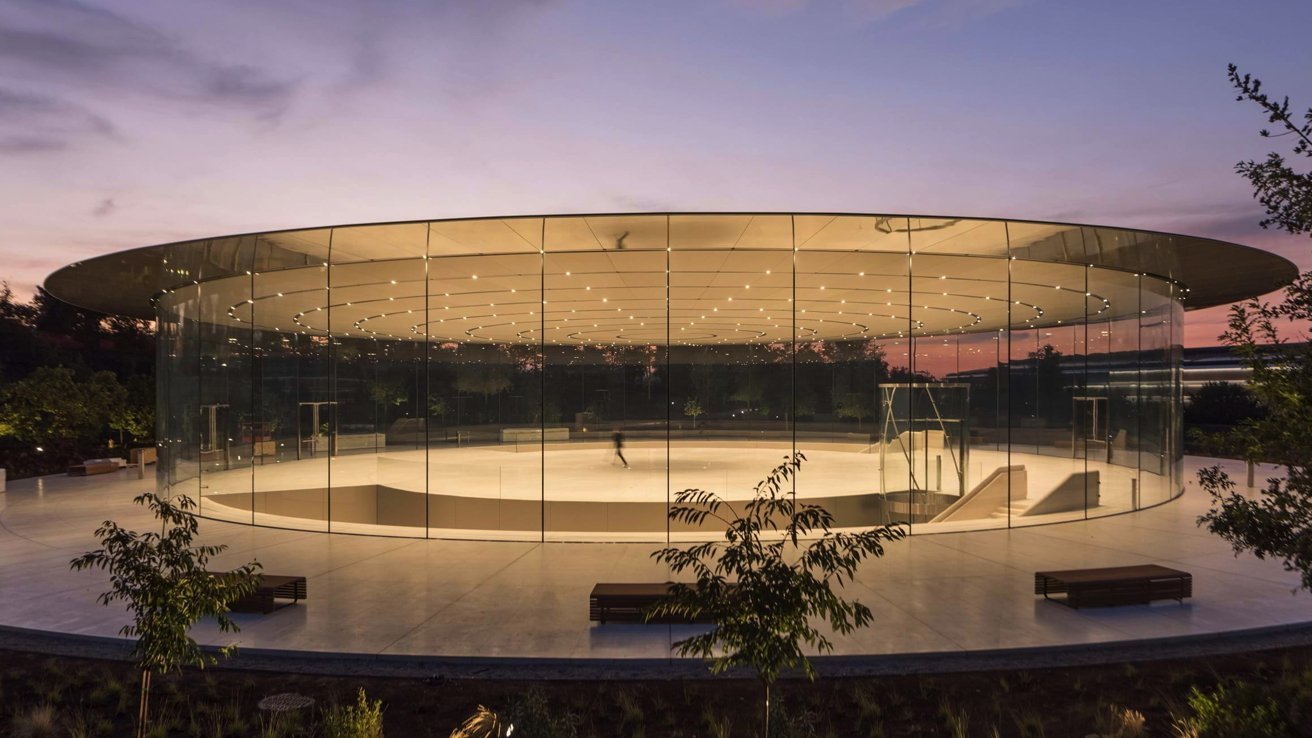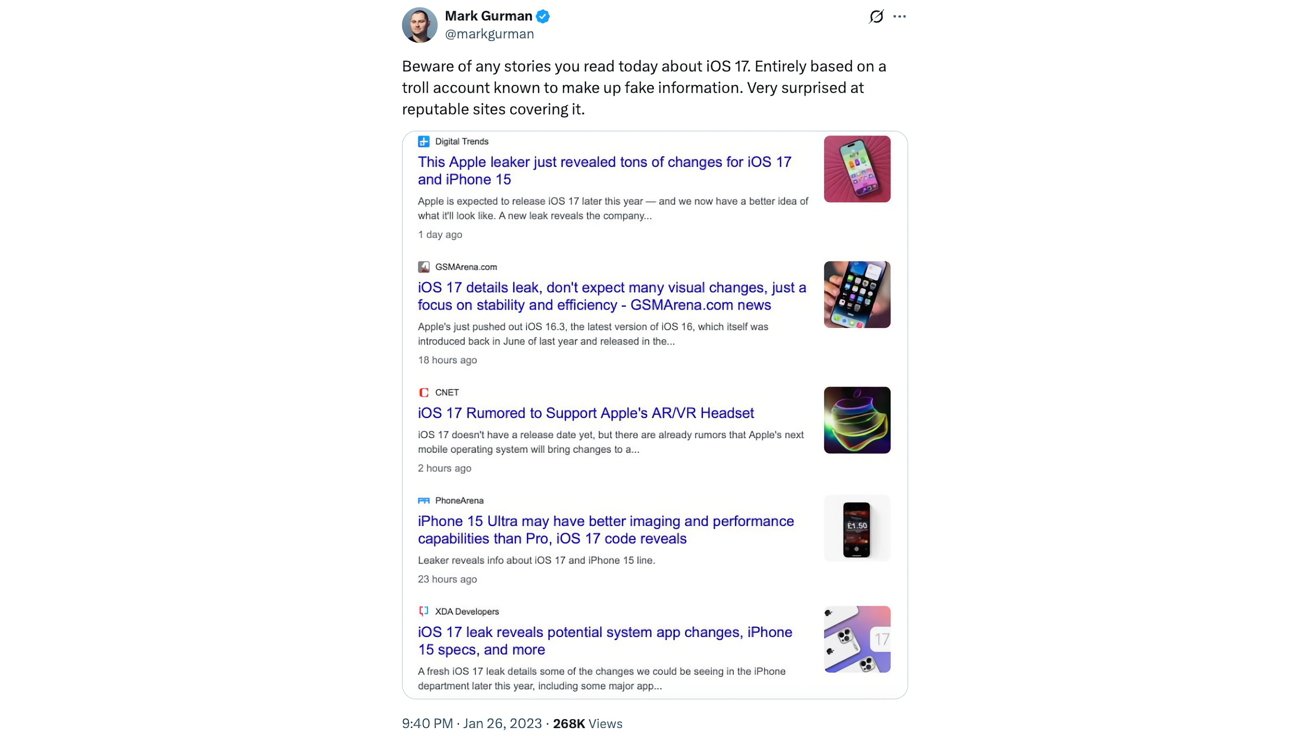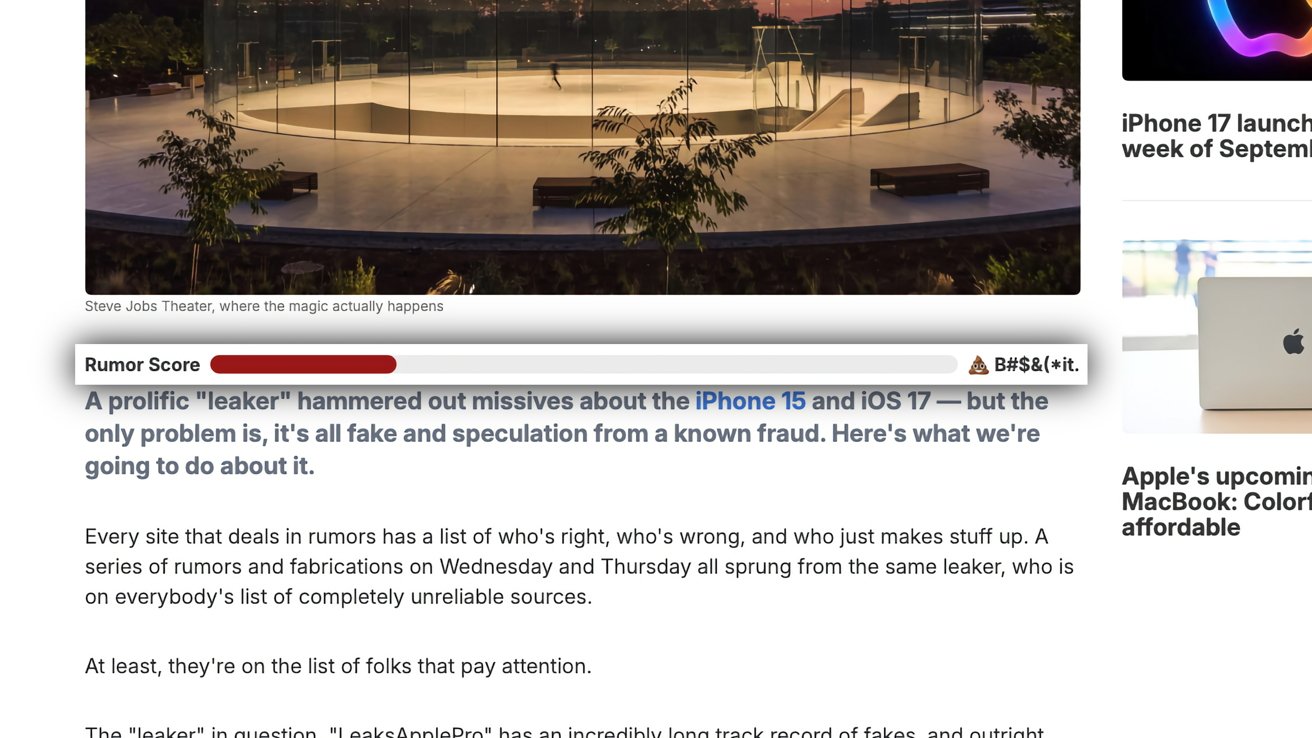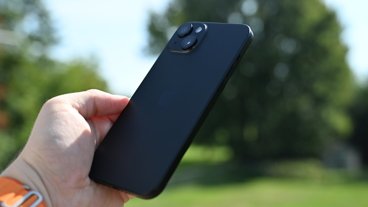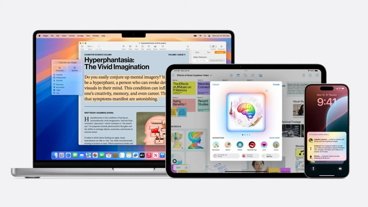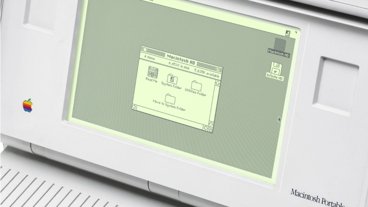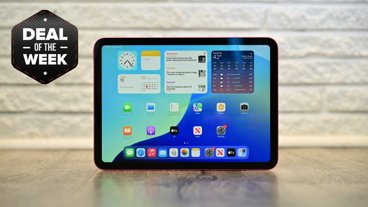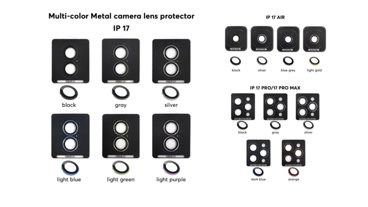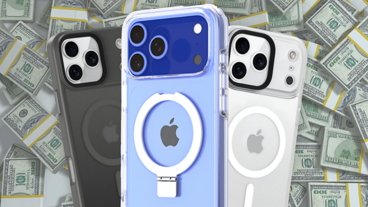A newly prominent leaker with a sketchy reputation is capitalizing on their popularity by selling iPhone 17 cases months before the iPhone models launch. You probably shouldn't buy them.
Being a tech leaker isn't generally a well-paid job. Typically operating outside of traditional publishing, there isn't that many ways for leakers to capitalize on a tidbit of information that they get from somewhere.
There are some exceptions, such as leakers who are employed by major outlets, and those who manage to make themselves a public figure on YouTube.
However, not everyone is able to carve out a YouTube niche, be a stock analyst like Ming-Chi Kuo, get picked up by Bloomberg like Mark Gurman was, or get it right almost always like Sonny Dickson. This leads to leakers trying to come up with new ways to earn a living from their rumor reporting efforts.
Sometimes, it goes down a bad route.
While this article does delve into the shady side of the rumor marketplace, we want to make it clear that there are other voices in the leaker community. This is not an attack on those who speculate based on rumors, such as most stock analysts, or those who make renders or speculate for fun.
This is about those who decide to build influence and then use it in a questionable way.
The case of cases
Majin Bu is a recent Apple leaker who has frequently reported on iPhones via social media. They've never had a good track record, and have generally repackaged rumors by other leakers, taken things off of Chinese social media and claimed them as their own, or made common-sense guesses about the future like a recent Dynamic Island post.
Their collection of 75.4 thousand followers isn't stratospheric by typical social media standards. But, it is made up of people who want to hear leaks from Majin Bu directly, which makes it an extremely focused audience.
It is possible to earn from X's program, and Majin Bu seemingly meets most or all of the eligibility requirements.
But Bu has gone down another route. Much like analysts launching a Substack or Medium account, the leaker now has a website where they put lengthier rumor posts, and hosts some travel and cooking guides.
While Bu could feasibly plaster loads of advertising on their site and generate revenue that way, they have declined to go down that route. Instead, they're taking a more direct path to monetization by allowing people to buy iPhone cases for the fall 2025 flagship
In the post describing "The New MagSafe Case Designed for iPhone 17 Pro," Bu retells of earlier rumors that the Apple logo will be repositioned due to the use of a new large camera module.
Rather than reveal a new detail, the post instead has Bu introduce a "well-thought-out solution" in the form of new MagSafe cases.
Bu goes on to extol the values of the new cases, before providing information to customers. Anyone who had bought a case from the Majin Bu Official are assured that compatibility is guaranteed, and that it is a "purely aesthetic change."
They then state that the new MagSafe cases for the iPhone 17 Pro are now available, then link to ten products identified as iPhone 17 cases in varying styles.
The problem is, the cases probably don't exist yet, and if they do, they're based on data that may not be right.
Sales before launches
The cases all have descriptions as if they are legitimate products that exist today, but the text doesn't say when the cases will be made available to the public. It is plausible that they could be for pre-orders of cases that will be delivered after the iPhone is out and measurements could be confirmed before mass production, but it doesn't say that, nor if the cases will be sent as soon as possible.
Instead, the customer will be contacted within 24 hours of their order to collect more details or to customize their purchase.
The cases are also on the premium-priced side, ranging from 39.99 euros ($46.70) to 49.99 euros ($58.39). This is ridiculous pricing, even in a newly-tariffed world.
All of the cases are also listed as being under the Lieko brand. The describes it as a case manufacturer with 21 years of experience, and can produce cases within 20 days.
On further inspection, it also seems that Bu has been promoting the cases quietly as part of their iPhone 17 rumors. Images shared by Bu over the summer have included iPhone 17 renders inside cases.
Risky for the consumer
Bu is trying to sell cases before anyone truly knows the dimensions of the device. This isn't entirely a new problem, as it is common for case producers to design cases based on rumors, speculation, and CAD leaks. All of this "data" filters handily through the rumor mill in the months ahead of an iPhone launch.
Case making is a billion-dollar industry, with some peril. Years ago, cases were made for a "teardrop" iPhone that didn't exist. More recently, the camera control button caused some problems for early case makers, but they quickly adapted.
Bu's store is offering cases that will be produced well in advance based on rumored specifications. However, rather than being made for launch week sales, consumers may end up getting cases long before the phones are released.
At worst, consumers could end up with a pre-release case that simply doesn't fit the iPhone 17 when Apple actually ships it. As we've said, pre-manufactured cases didn't work with the camera control button very well.
More company, less accuracy
Bu's leaks weren't very good to begin with, and they've seen a considerable drop in uniqueness, accuracy, and quality. While we cannot state for certain what happened over time, the most obvious reason is the need for content to continue growth.
A leaker who is both prolific and generally accurate can quickly amass a following, as Bu managed to do. However, over time, the amount of rumors that can be learned and shared reduces, in part due to the increasing number of people who are trying to get into the leak-sharing game.
The desire to increase that audience is usually met by increasing the number of leaks being released. To meet that demand, a leaker may be tempted to repost leaks uncritically from elsewhere that may not be genuine, or in some instances, completely make things up.
We're not yet precisely sure where Bu lies on this spectrum. We've been doing this a long time, and tracking a lot of leakers. We know that the half-life of leakers is about 18 months.
Bu's track record appears to be following that timetable almost to the letter.
Blue-sky thinking
Sometimes Bu's leaks work against things they previously said, and involve other leakers.
In April 2025, Majin Bu claimed the exclusive color for the iPhone 17 Pro would be "YuangFeng Blue" or "Sky Blue," matching the M4 MacBook Air and M3 iPad Air's colorway.
Months later, on July 8, Weibo leaker Fixed Focus Digital said that the iPhone 17 Air will ship in a Light Blue option. Seemingly unwilling to lose their thunder, Bu posted the next day, July 9, about iPhone 17 Air color options, reiterating the Light Blue claim for the Air, but not mentioning the Pro.
A pair of camera lens protector leaks arrived later in the month, from yeux1122 and Sonny Dickson. In both cases, the iPhone 17 Air is said to have a Light Blue color option, with Dickson adding that there would be a Dark Blue version of the Pro models, but no sign of Light Blue in the Pro roster at all.
Bu then posted on their website on , saying the Pro won't get Sky Blue, but the iPhone 17 Air still will. Bu also teased that other colors will be revealed for the Pro models in a future article, which will most likely line up with Dickson's Pro accessory leak.
The Light Blue afair demonstrates that Bu can sometimes have awareness of a fact on occasion. But then their claims devolve into "me too" posts once other leakers with different information and better reputations wade into the conversation.
A reputational warning from history
This is not the first time that we have seen leakers torpedo their reputations and online existence in a bid for increased popularity. Consider the case of LeaksApplePro.
LeaksApplePro was prolific from the start, like Bu. It was a social-focused account that was making stuff up, if not outright trolling, their audience.
They were clearly labeled as unreliable by various Apple-specific publications. The claims from LeaksApplePro still made it into mainstream outlets, and covered uncritically as if the gospel truth.
An early example of the LeaksApplePro problem was when they claimed to be at Apple Park during the iPhone 12 event, in the height of the COVID-19 pandemic. The apparent "proof" was a tweeted image of Apple Park, which was reverse Google-searched and found to have been a stolen photo from someone else.
Right after being busted, the leaker doubled down, claiming Tim Cook had thrown everyone out of the building because they were "leaking" everything to the public.
Later analysis confirmed that 100% of the information they "leaked" was bogus, with not a single correct fact at all.
They resurfaced in 2023, offering more liesabout the iPhone 15 Pro and iOS 17,
Throughout most of this, LeaksApplePro also tried to shill Apple Watch bands from a questionable company via their X (then Twitter) account. This is very similar to what Majin Bu has done in 2025, trying to convert a sizable earned following into potential sales.
Because of all this, and because of the nature of reporting on leaks, we added a rumor feature known as the "BS Meter," which gives a quick and obvious indication to readers of how much the editorial team believes in the rumor.
LeaksApplePro serves as an example of how the push for content to gain notoriety can go very wrong.
Making money from secrets
While accuracy is hard to acquire for leakers and reputations easily dashed by mistakes or LeaksApplePro catastrophes, it's still something that can be maintained.
There are a number of leakers and rumor reporters out there who are still considered good sources for these types of claims. For example, Mark Gurman did a fantastic job making a name for himself in rumor reporting. He was good enough to be picked up by Bloomberg for his troubles.
Likewise, TF Securities analyst Ming-Chi Kuo has a considerable following. This is down to a combination of self-sourced supply chain checks, as well as mostly accurate and correctly labelled forecasts on Apple's future releases. Even Kuo's accuracy is waning a bit, but we'll still put him in the top tier.
Others have mixed results, such as DigiTimes, ETÌÇÐÄVlog, and analyst Jeff Pu. All three are good sources from within Apple's supply chain for raw data, but what they infer about Apple's plans is often just wrong.
For example, DigiTimes insisted that the Pro Display XDR was a new large-screen iMac, powered by an A-series processor.
Then there are the plethora of stock analysts who chime in on rumors generated elsewhere in notes to investors, and sometimes pass them off as their own without crediting where the report came from in the first place.
These are what we call "me too" reports, adding little new except for opinion, masquerading as their own work for the most part. They do act to help raise the profile of the analysts by forcing themselves into the conversation.
As usual, there is also the wave of social media leakers, including Majin Bu. There are others on Weibo like Fixed Focus Digital, and the equally social Jukanlosreve, formerly known as Techreve.
Social-specific leakers, on the aggregate, have pretty poor track records, and they believe they can get away with it due to being anonymous. There are some good ones out there, though, as Fixed Focus Digital and Jukanlosreve both generate their own rumors with their own sourcing.
By contrast, Bu copies the leaks and rumors of others and re-reports them on a more frequent basis.
Generally speaking, publications like Bloomberg and identifiable leakers and rumor reporters like Ming Chi Kuo tend to be more accurate and take care about their posts. They have the greatest potential to suffer the consequences of being repeatedly wrong, unlike those protected by a pseudonym with little at stake besides a Weibo account.
Monetization needs a bit more care
The problem isn't about a leaker gaining in popularity. It's not even about monetization.
With the constant ebb and flow of the rumor mill, a leaker can secure a large following if they work hard. They can quickly lose it if they go down the route of leak fabrication or lazy reporting.
Those who work in the field professionally, like us and our friends at 9to5Mac and MacRumors, have good reason to maintain quality. Reputation is everything.
Where the problem specifically lies here is the sale of cases for a product that doesn't officially exist yet, buoyed by mostly wrong rumors or obvious predictions.
If a leaker sells an accessory for an existing product, such as accessories for the iPhone 16 generation, there's absolutely no issue. They are known quantities, so manufacturing accessories for them is not a risky proposition at all.
For products that have yet to be announced, shilled by a leaker with a sketchy reputation, it's a transaction that carries too much risk for consumers to be comfortable taking.
